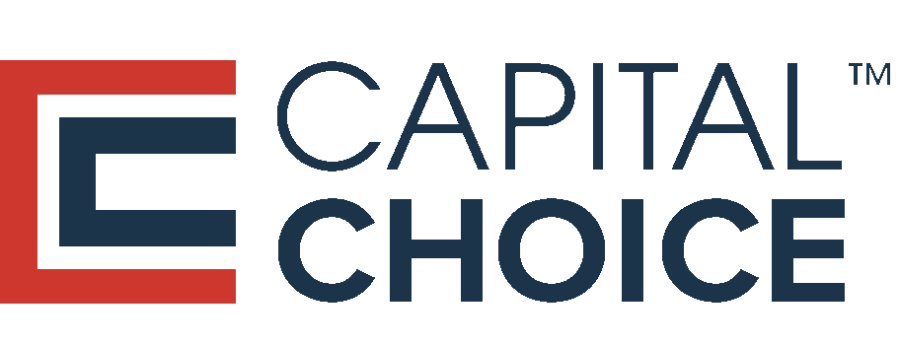Hey there! I see you’re planning for that much-deserved, beautiful phase of life – retirement. It’s an exciting time, isn’t it? But let’s be honest, it can also be quite daunting, especially when you start thinking about money matters. Trust me, I’ve been there.
You see, a few years back, I was where you might be right now. Dreaming about those lazy mornings without alarm clocks, yet losing sleep over whether I’d have enough money to enjoy my golden years stress-free. That’s when I discovered the magic word – budgeting.
Now, before you roll your eyes and think “I’ve tried budgeting, it’s not for me”, hear me out. Budgeting isn’t just about cutting back on your favorite latte or saying no to that vacation you’ve been dreaming of. No, it’s much more than that. It’s about understanding your finances, knowing where your money is going, and making sure it’s working for you, not against you. It’s about gaining control over your finances so that you can have that peaceful, worry-free retirement you’ve always envisioned.
In this blog post, I’m going to share with you the insights and strategies I’ve gathered over the years as a financial planning expert, and more importantly, as someone who has walked the path you’re on right now. So, take a deep breath, grab a cup of coffee (or something else, coffee is just my thing), and let’s dive into the world of budgeting. Trust me, it’s not as scary as it sounds, and the rewards are well worth it. Let’s embark on this journey to a stress-free retirement together, shall we?
Understanding Budgeting
Alright, let’s start by demystifying this term – budgeting. I know, it sounds like a monster under the bed, all ready to snatch away your fun and freedom. But here’s the truth – it’s not. I remember when I first started budgeting, I thought it was all about depriving myself of the things I loved. But boy, was I wrong!
Budgeting is actually your best friend on this journey to financial freedom. It’s like a roadmap that guides you towards your financial goals, ensuring you don’t lose your way or run out of fuel (money). It’s about knowing what’s coming in, what’s going out, and making conscious decisions about how you want to allocate your hard-earned money.
One common misconception about budgeting is that it’s restrictive. You might think, “If I start budgeting, I’ll never be able to splurge on that fancy restaurant or buy those designer shoes.” But that’s far from the truth. In my own experience, budgeting didn’t mean I had to give up on things I enjoyed; it simply meant I had to plan for them.
For instance, I love traveling. When I started budgeting, I didn’t stop exploring new places. Instead, I created a separate ‘travel’ category in my budget. This way, I knew exactly how much I could afford to spend on my adventures without jeopardizing my other financial commitments or goals.
So, budgeting isn’t about cutting corners or living a Spartan life. It’s about making informed decisions, planning for expenses (both expected and unexpected), and, ultimately, giving yourself the peace of mind that comes from knowing you’re financially secure. And trust me, there’s no better feeling than that, especially as you approach retirement!
Steps to Create a Successful Budget
You’ve made it this far, which tells me you’re serious about mastering budgeting. Awesome! Now, let’s dive into the meat of the matter – creating a successful budget. Don’t worry, I’ll walk you through it step-by-step.
- Identifying Income and Expenses
First things first, you need to know your numbers. It’s like stepping on the scale before starting a diet. You can’t really set a weight loss goal without knowing where you are right now, can you? The same goes for budgeting.
Start by identifying all your sources of income. This could be your salary, rental income, dividends, or that side gig you do over the weekends. Once you’ve got that figured out, move on to your expenses. Now, this part can be a bit tricky and requires some detective work.
I remember when I first started tracking my expenses, I was surprised to see how much I was spending on take-out food. It was a real eye-opener and helped me make better choices. So, dig out your bank statements, credit card bills, and receipts, and list down every single expense. Remember, every penny counts!
- Setting Financial Goals
Now that you have a clear picture of your income and expenses, it’s time to set some financial goals. These goals will serve as your guiding light, keeping you focused and motivated.
When I was planning for my retirement, I had three main goals – pay off my mortgage, build an emergency fund, and save enough for travel. Your goals could be different. Maybe you want to save for a new car or a dream vacation. Or perhaps, you want to leave a legacy for your children. Whatever they are, write them down and keep them in sight.
- Tracking Spending
Once you’ve set your goals, start tracking your spending. I know, it sounds tedious, but it’s actually quite enlightening. You’ll be amazed at where your money is going (and how much of it is going there!).
There are several ways to do this. You could use a good old spreadsheet or opt for one of the many budgeting apps available. I personally love using apps because they make tracking expenses a breeze, and I always have them at my fingertips.
- Adjusting the Budget as Needed
Remember, a budget isn’t set in stone. It’s a living, breathing entity that needs to be adjusted and tweaked as per your lifestyle and financial situation.
For instance, when I first created my budget, I didn’t account for my pet’s medical expenses. But when my furry friend got sick and the vet bills started piling up, I had to adjust my budget to accommodate these unexpected expenses.
So, don’t be disheartened if your initial budget doesn’t work out perfectly. It’s all part of the process. Just keep tweaking and adjusting until you find a budget that works for you. And remember, the goal here isn’t to create a perfect budget; it’s to create a budget that helps you achieve your financial goals and enjoy a stress-free retirement. I like to think of it as ‘Failing Forward,’ meaning that you never fail at budgeting as long as you keep working with it. You will learn how to make adjustments and get everything dialed in within due time.
Different Budgeting Methods
So, you’re ready to create a budget, but you might be wondering, “Where do I start?” Let me tell you, there’s no one-size-fits-all when it comes to budgeting methods. What works for me might not work for you, and that’s okay. The key is to find a method that fits your lifestyle and financial goals. Here are a few popular ones that you might want to consider:
- The 50/30/20 Rule
This method, popularized by Elizabeth Warren in her book “All Your Worth”, is a simple and straightforward approach to budgeting. It suggests dividing your after-tax income into three categories: 50% for needs, 30% for wants, and 20% for savings and debt repayment. This method can be a bit over-simplified, but it can provide you and your family with the general guidelines to know if you need to make big spending changes or not when you begin budgeting.
- Zero-Based Budgeting
This method, made popular by Dave Ramsey, requires you to assign every dollar a job. In other words, your income minus expenses should equal zero. Now, this doesn’t mean you spend all your money. It simply means you’re accounting for every dollar, whether it’s going towards bills, savings, or that occasional splurge. This method requires a bit more effort, but it gives you complete control over your money. I used this method when I first started budgeting, and it was a game-changer for me.
- Envelope System
This is an old-school method where you use cash for different categories of your budget, and once the cash is gone, it’s gone. Each category gets an envelope (hence the name), and you fill each envelope with the budgeted amount at the beginning of the month. This method is great for visual learners and those who want to curb their spending.
- Automated Budgeting
In this digital age, automated budgeting has become quite popular. There are numerous apps that can track your spending, set budgets for different categories, and even automatically save for you. If you’re tech-savvy and want a hassle-free way to budget, this might be the method for you. With me and my wife actively budgeting together, we use an application to manage our spending.
Remember, the best budgeting method is the one that you can stick with. So, feel free to experiment with these methods, or even a combination of them, until you find what works best for you. After all, the journey to a stress-free retirement is all about making informed and conscious decisions that align with your financial goals and lifestyle.
Conclusion
Budgeting may seem daunting at first, but as we’ve discussed throughout this guide, it’s a powerful tool that can help you achieve financial freedom and peace of mind. It’s not about restriction, but rather about making informed decisions that align with your financial goals.
Whether you choose the 50/30/20 rule, zero-based budgeting, the envelope system, automated budgeting, or a combination of these methods, remember that the best budget is the one that works for you. It’s all about finding a balance between your income, expenses, and financial goals.
As you embark on this journey towards mastering budgeting, remember to be patient with yourself. It might take some time to get used to tracking your spending or adjusting your budget. But rest assured, each step you take brings you closer to your financial goals.
And remember, budgeting isn’t just about numbers or money; it’s about enjoying a stress-free retirement, knowing you’re financially secure. So, start budgeting today and take control of your financial future. After all, you’ve worked hard for your money; now it’s time to make your money work for you!
In the end, budgeting is the story you tell yourself about your money. Make sure it’s a story that ends with you living comfortably, achieving your dreams, and enjoying your golden years to the fullest. Happy budgeting!




